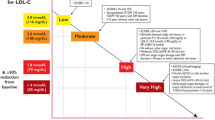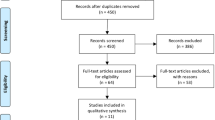Abstract
Objective: To estimate the cost effectiveness of treatment with n-3 polyunsaturated fatty acids (PUFA) for secondary prevention after myocardial infarction (MI).
Design and setting: The cost-effectiveness analysis of n-3 PUFA treatment after MI was based on morbidity and mortality data and the use of resources obtained prospectively during the 3.5 year follow-up period of the Gruppo Italiano per lo Studio della Sopravvivenza nell’Infarto (GISSI)-Prevenzione study. The cost-effectiveness analysis took into account the incremental number of life-years gained and the incremental costs for hospital admissions, diagnostic tests and drugs, applying a 5% discount rate. The value for money of n-3 PUFA treatment was assessed using the cost-effectiveness ratio and the number needed to treat (NNT) approach.
Perspective: Third-party payer.
Main outcome measures and results: The incremental cost-effectiveness ratio for n-3 PUFA in the base case scenario was 24 603 euro (EUR, 1999 values) per life-year gained (95% confidence interval: 22 646 to 26 930). Sensitivity analysis included the analysis of extremes, producing estimates varying from EUR15 721 to EUR52 524 per life-year gained. 172 patients would need to be treated per year with n-3 PUFA, at an annual cost of EUR68 000, in order to save 1 patient. This is comparable with the NNT value, and associated annual cost for simvastatin, but less costly than that for pravastatin.
Conclusions: The cost effectiveness of long term treatment with n-3 PUFA is comparable with other drugs recently introduced in the routine care of secondary prevention after MI. Since the clinical benefit provided by n-3 PUFA is additive, this therapy should be added to the established routine practice, with additive costs.








Similar content being viewed by others
References
Gruppo Italiano per lo Studio della Sopravvivenza nell’Infarto Miocardico. Dietary supplementation with n-3 polyunsaturated fatty acids and vitamin E after myocardial infarction: results of the GISSI-Prevenzione trial. Lancet 1999; 354: 447–55
Gerard K, Smoker I, Seymour J. Raising the quality of cost-utility analyses: lessons learnt and still to learn. Health Policy 1999; 46: 217–38
Robinson R. Limits to rationality: economics, economists and priority setting. Health Policy 1999; 49: 13–26
Drummond MF, Davies LM. Economic analysis alongside clinical trials: revisiting the methodological issues. Int J Technol Assess Health Care 1991; 7: 561–73
Franzosi MG, Maggioni AP, Santoro E, et al. Cost-effectiveness analysis of early lisinopril use in patients with acute myocardial infarction: results from GISSI-3 Trial. Pharmacoeconomics 1998; 13 (3): 337–46
Jha P, Flather M, Lonn E, et al. The antioxidant vitamins and cardiovascular disease: a critical review of epidemiological and clinical trial data. Ann Intern Med 1995; 123: 860–72
Simopoulos AP. Omega-3 fatty acids in health and disease and growth and development. Am J Clin Nutr 1991; 54: 438–63
Simopoulos AP. ω-3 Fatty acids in the prevention-management of cardiovascular disease. Can J Physiol Pharmacol 1997; 75: 234–9
Marchioli R, Di Pasquale A, per i Ricercatori GISSI-Prevenzione. Il quadro di riferimento biochimico, farmacologico, epidemiologico del GISSI-Prevenzione. G Ital Cardiol 1993; 23: 933–64
Bang HO, Dyerberg J, Hjørne N. The composition of food consumed by Greenland Eskimos. Acta Med Scand 1976; 200: 69–73
Burr ML, Fehily AM, Gilbert JF, et al. Effects of changes in fat, fish, and fibre intakes on death and myocardial reinfarction: diet and reinfarction trial (DART). Lancet 1989; ii: 757–61
Drummond MF, O’Brien B, Stoddart GL, et al. Methods for the economic evaluation of health care programmes. 2nd ed. Oxford: Oxford Medical Publications, 1997
Ministero della Sanità. Decreto Ministeriale n.178 del 30 giugno 1997. Aggiornamento delle tariffe delle prestazioni di assistenza ospedaliera, di cui al decreto ministeriale 14 dicembre 1994. Supplemento ordinario alla Gazzetta ufficiale n. 209 del 8 Settembre 1997. Serie Generale
Ministero della Sanità. Decreto Ministeriale n. 150 del 22 luglio 1996. Prestazioni di assistenza specialistica ambulatoriale erogabili nell’ambito del Servizio sanitario nazionale e relative tariffe. Supplemento ordinario alla Gazzetta ufficiale n. 216 del 14 Settembre 1996. Serie Generale
L’Informatore Farmaceutico. 59th ed. Milano: Organizzazione Editoriale Medico Farmaceutica, 1999
Briggs A. Handling uncertainty in economic evaluation. BMJ 1999; 319 (7202): 120
Briggs A, Sculpher M, Buxton M. Uncertainty in economic evaluation of health care technologies: the role of sensitivity analysis. Health Econ 1994: 3: 95–104
Moriarty PM. Relative risk reduction versus number needed to treat as measures of lipid-lowering trial results. Am J Cardiol 1998; 82 (4): 505–7
Pearce KA, Furberg CD, Psaty BM, et al. Cost-minimization and the number needed to treat in uncomplicated hypertension Am J Hypertens 1998; 11: 618–29
Marchioli R, Tognoni G, Valagussa F, et al. GISSI-Prevenzione trial [letter]. Lancet 1999; 354: 1556–7
Scandinavian Simvastatin Survival Study Group. Randomized controlled trial of cholesterol lowering in 4444 patients with coronary heart disease: the Scandinavian Simvastatin Survival Study (4S). Lancet 1994; 344: 1383–9
Sacks FM, Pfeffer MA, Moye LA, et al. The effect of pravastatin on coronary events after myocardial infarction in patients with average cholesterol levels. N Engl J Med 1996; 335: 1001–9
Lipid Study Group. Prevention of cardiovascular events and death with pravastatin in patients with coronary heart disease and a broad range of initial cholesterol levels. N Engl J Med 1998; 339: 1349–57
Hill SR, Mitchell AS, Henry DA. Problems with the interpretation of pharmacoeconomic analyses: a review of submissions to the Australian Pharmaceutical Benefits Scheme. JAMA 2000; 283: 2116–21
Rennie D, Luft HS. Pharmacoeconomic analyses: making them transparent, making them credible. JAMA, 2000; 283: 2158–60
Schwartz D, Lellouch J. Explanatory and pragmatic attitudes in therapeutic trials. J Chronic Dis 1967; 20: 637–48
Mark DB, Hlatky MA, Califf RM, et al. Cost effectiveness of thrombolytic therapy with tissue plasminogen activator as compared with streptokinase for acute myocardial infarction. N Engl J Med 1995; 332: 1418–24
NHS Centre for Review and Dissemination. Health care cholesterol and coronary heart disease: screening and treatment. Effective Health Care 1998 Feb; 4 (1)
Sheldon TA. Problems of using modelling in the economic evaluation of health care. Health Econ 1996; 5: 1–11
Detsky AS, Naglie IG. A clinician’s guide to cost-effectiveness analysis. Ann Intern Med 1990; 113: 147–54
Naylor D. Cost-effectiveness analysis: are the outputs worth the inputs? ACP J Club 1996; 124: A12–4
Van der Weijden T, Knottnerus JA, Ament AJHA, et al. Economic evaluation of cholesterol-related interventions in general practice: an appraisal of the evidence. J Epidemiol Community Health 1998; 52: 586–94
Morris S, McGuire A, Caro J, et al. Strategies for the management of hypercholesterolaemia: a systematic review of the cost-effectiveness literature. J Health Serv Res Policy 1997; 2: 231–50
Hay JW, Yu WM, Ashraf T. Pharmacoeconomics of lipid-lowering agents for primary and secondary prevention of coronary artery disease. Pharmacoeconomics 1999; 15 (1): 47–74
Johannesson M, Jonsson B, Kjekshus J, et al. Cost effectiveness of simvastatin treatment to lower cholesterol levels in patients with coronary heart disease. Scandinavian Simvastatin Survival Study Group. N Engl J Med 1997; 336: 332–6
Jonsson B, Johannesson M, Kjekshus J, et al. Cost-effectiveness of cholesterol lowering: results from the Scandinavian Simvastatin Survival Study (4S). Eur Heart J 1996; 17: 1001–7
Szucs TD, Guggenberger G, Berger K, et al. Pharmacoeconomic evaluation of pravastatin in the second prevention of coronary heart disease in patients with average cholesterol levels: an analysis for Germany based on the CARE study [in German]. Herz 1998; 23 (5): 319–29
Acknowledgements
The Gruppo Italiano per lo Studio della Sopravvivenza nell’Infarto (GISSI) is endorsed by the Associazione Nazionale Medici Cardiologi Ospedalieri (ANMCO) and by the Istituto di Ricerche Farmacologiche ‘Mario Negri’.
The present study was funded by a research grant from Pharmacia & Upjohn and Società Prodotti Antibiotici, and was conducted independently by the Istituto di Ricerche Farmacologiche ‘Mario Negri’. The views expressed here are those of the authors.
Author information
Authors and Affiliations
Corresponding author
Rights and permissions
About this article
Cite this article
Franzosi, M.G., Brunetti, M., Marchioli, R. et al. Cost-Effectiveness Analysis of n-3 Polyunsaturated Fatty Acids (PUFA) after Myocardial Infarction. Pharmacoeconomics 19, 411–420 (2001). https://doi.org/10.2165/00019053-200119040-00008
Published:
Issue Date:
DOI: https://doi.org/10.2165/00019053-200119040-00008




